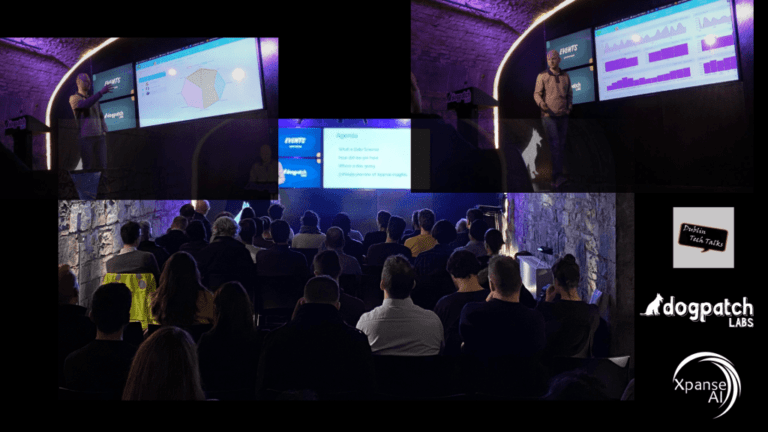In this fast-paced era of information, truly understanding your customers’ needs, values, behaviour, likes and dislikes is more important than ever. Regardless of your industry or business, you’re probably experiencing unprecedented competition for what feels like decreasingly loyal consumers.
To maintain relevance you need to be able to interpret your customer information and generate meaningful, actionable insights. We hear the word, “insight” thrown around a lot, but what does it actually mean?
What is a Customer Insight?
A customer insight is a piece of information about human behaviors and desires to inform the development of products or services. We need insights to drive delivery of KPIs such as sales or retention and to support improvements in customer experience. In other words, happy customers will push your KPIs in the right direction and customer insights are some of the most valuable enablers in achieving just that.
Your insight development will typically focus on specific actions (or inaction) from your customer – such as purchasing a new product or leaving to the competition. Customers’ behaviour is the key driver of business activity and this is why a great customer insight is one that is accurate, actionable and relevant to your business objectives.

Isn’t that just another way to describe customer data?
Not entirely. A helpful way to consider it is that your data is the “what” behind your customers. What products do they buy? Where do they buy them? When do they abandon purchases etc? When viewed on a macro level this information is vitally important, but can all look meaningless or overwhelming.
Insight is about simplifying the data and distilling what really matters for the decision at hand. A meaningful customer insight will allow you to understand the “why” behind a specific set of behaviours.
Why do your customers prefer service X over service Y? Why are they switching products? Or, why are your customers not buying at all? Good insights can support you in answering these crucial questions and defining your next best action.
“We use insights to make sure we’re setting ourselves up in a way that we can nurture opportunities without doing something contrary to our customers’ interests.”
Martin Graham, Head of Insight and Analytics in Virgin Media
Building an insight-driven strategy
We’ve broken down just some of the ways that meaningful customer insights might be applied when developing a marketing or business strategy:
1. Messaging personalisation
When you know your customer you can build targeted, personalised messages based on their unique values, challenges or preferences. Personalisation with relevant messaging supports cut-through, but also reassures your customer that they are appreciated and understood.
2. Optimise customer journey
Using your customer data to develop specific insights you can identify areas of pain in user experience or inefficiencies for specific customer segments. For example, a customer segment that has very specific communication needs may not be converting as well in specific channels. Your customer insights will support you in improving the experience for this specific cohort, without detracting from your overall communications or sales strategy.
3. Match product to consumer
Nobody appreciates a hard sell, and even less so an irrelevant hard sell. Directly match your product or service to your bullseye customer by responding to their specific needs or challenges.
4. Tailor your pricing
Insights can allow you to devise an informed and effective flexible pricing strategy that may appeal to a new type of customer or remove the risk of alienating existing segments.
5. Drive innovation & continuous improvement
Companies who are willing to learn from their customers can constantly adapt and innovate their offerings or services. By paying close attention to your customer behaviour by using your insights, you can test innovative new solutions with intent and relatively low risk.
Why are customer insights relevant?
A meaningful, relevant customer insight helps to eliminate the guesswork from decision making. By truly understanding the why behind behaviors you can communicate with confidence. You engage your customers in a tone, manner, timing and channel that will resonate with them. Your campaigns are not only going to be targeted, but they will be informed by a unique and intentional interpretation of data.
Do you know your customer better than your competitor?
Within a vastly competitive landscape driven by fast-paced, informed consumers, it is no longer an option for companies to market effectively without the benefit insights. More and more, management teams are becoming aware of this need and are drilling into their data like never before.
Outlined in a recent report by Forrester, the authors identified a 21% growth in businesses bringing customer insights execution in-house. While the report acknowledges the potential for businesses to become more agile and innovative, there is a risk effort could stall due to a lack of sophistication or analytical experience. So is there a user-friendly way to generate insights and truly know your customer?
Do you need to be a data analyst to generate insights?
Not any more, no. Recent progress in the development of more user-friendly analytical platforms makes it so much easier for all users to understand their data and discover insights independently.
Xpanse Insights is a real-time data analysis tool that displays complex information in a simple, user-friendly way to enable marketers and decision-makers to identify pockets of potential value / risk / opportunity etc. within their customer base. This tool allows users to ask questions and effortlessly generate actionable results.
Xpanse Insights will end the Data Dread by putting the power back in your hands!



